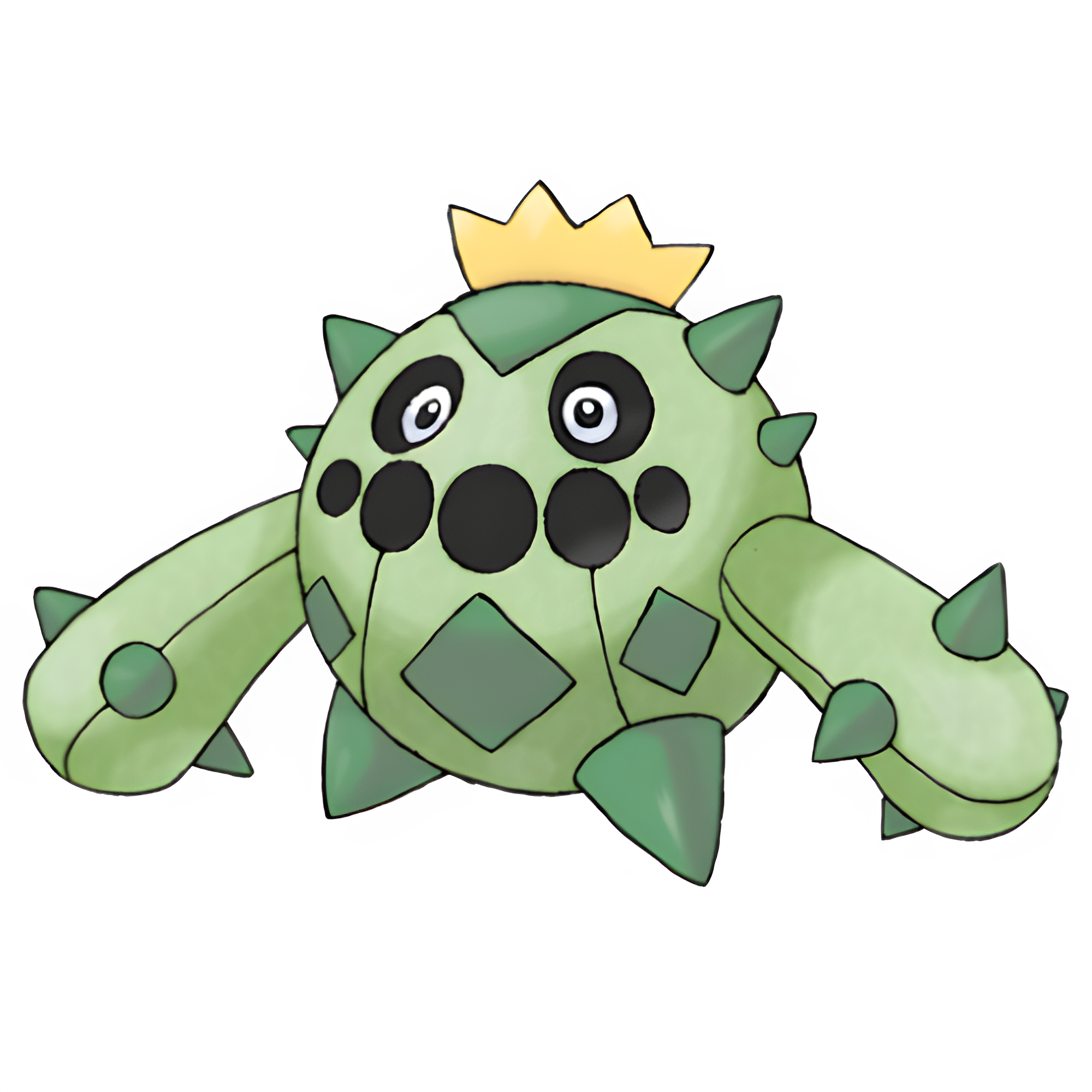Facts for Kids
Cacnea is a small, cactus-like Pokémon known for its spiny appearance and ability to thrive in harsh environments.
Overview
Conservation Status
Fun Facts And Trivia
Diet And Feeding Habits
Behavior And Adaptations
Habitat And Distribution
Physical Characteristics
Reproduction And Lifecycle
Cultural Impact And Representation

Inside this Article
Climate Change
Personality
Pressure
Cacturne
Pokémon
Desert
Energy
Are
Did you know?
🌵 Cacnea is a Grass-type Pokémon introduced in Generation III.
💧 Cacnea evolves into Cacturne starting at level 32.
🔥 Cacnea is known for its ability to survive in dry, arid environments.
🌞 Cacnea's body is covered in spines that help to reduce water loss.
🌍 Cacnea is often found in deserts and sandy areas.
🥳 It can be caught in Pokémon Ruby, Sapphire, and Emerald.
🧊 Cacnea has the ability to learn moves like Bullet Seed and Needle Arm.
🎉 Cacnea's Pokédex number is #331.
🧙♂️ Cacnea is known for its unique appearance, resembling a cactus.
💚 Cacnea has a strong connection to the environment, particularly in desert ecosystems.
Introduction
It is part of the Pokémon family introduced in Generation III, first appearing in Pokémon Ruby and Sapphire. Cacnea is a Grass-type Pokémon, meaning it loves to live in sunny places. Cacnea is known as the Cactus Pokémon, and its Pokédex number is 331. Cacnea evolves into a stronger Pokémon called Cacturne when it grows up. Let's discover where Cacnea lives and how it survives in the wild! 🌞
Conservation Status
Many cactus species are threatened due to habitat destruction and climate change. It's important to protect their environments and learn how to care for plants! 🌍
Cacnea shows us how these beautiful plants can adapt and survive, but we should respect all living things! 🌱
Fun Facts And Trivia
This attack makes its spikes even fiercer! Cacnea can also be found in Pokémon GO, so you can catch it while exploring your neighborhood. 🌍💖 Some Cacnea have been shown to be friendly in the Pokémon cartoon, making them cute companions! Also, their evolution, Cacturne, looks even cooler! If you see Cacnea while playing your games, be sure to give it a try! 🌟🎮
Diet And Feeding Habits
️ Sometimes, they might drink the moisture from their flowering bodies. They are great at finding food in dry areas, and they rarely go hungry! 🍂
Behavior And Adaptations
It can store water in its body, which allows it to go without drinking for up to two weeks. When Cacnea gets hungry, it uses its long, prickly arms to catch prey. It also has a unique way of protecting itself: when threatened, Cacnea can shoot needles at attackers! 💥
Its tough exterior keeps it safe in harsh climates while staying cute and charming! 🌟
Habitat And Distribution
Physical Characteristics
It has big, round eyes and a small mouth, making it look adorable. Cacnea stands about 1 foot tall (0.3 meters) and weighs around 51 pounds (23 kg). It also has a few flowers that bloom on its head, showing off its bright personality! 🌼
As a cactus Pokémon, it can survive without water for a long time, which is pretty amazing! 💧
Reproduction And Lifecycle
After a male Cacnea finds a female, they will mate, and the female lays eggs in a safe spot. When the eggs hatch, baby Cacnea, called Cacnea Chicks, are very small and need lots of care. 🌱
A baby Cacnea grows slowly, absorbing sunlight and energy to reach its full size. Once it becomes strong enough, it will eventually evolve into Cacturne! 🌵✨
Cultural Impact And Representation
It has appeared in Pokémon anime, video games, and trading card games. Some players love having Cacnea on their teams because of its cool cactus look. 🌟
Cacnea often represents endurance and the ability to thrive under pressure, teaching us that we can be strong and cute at the same time! 💪🌼

